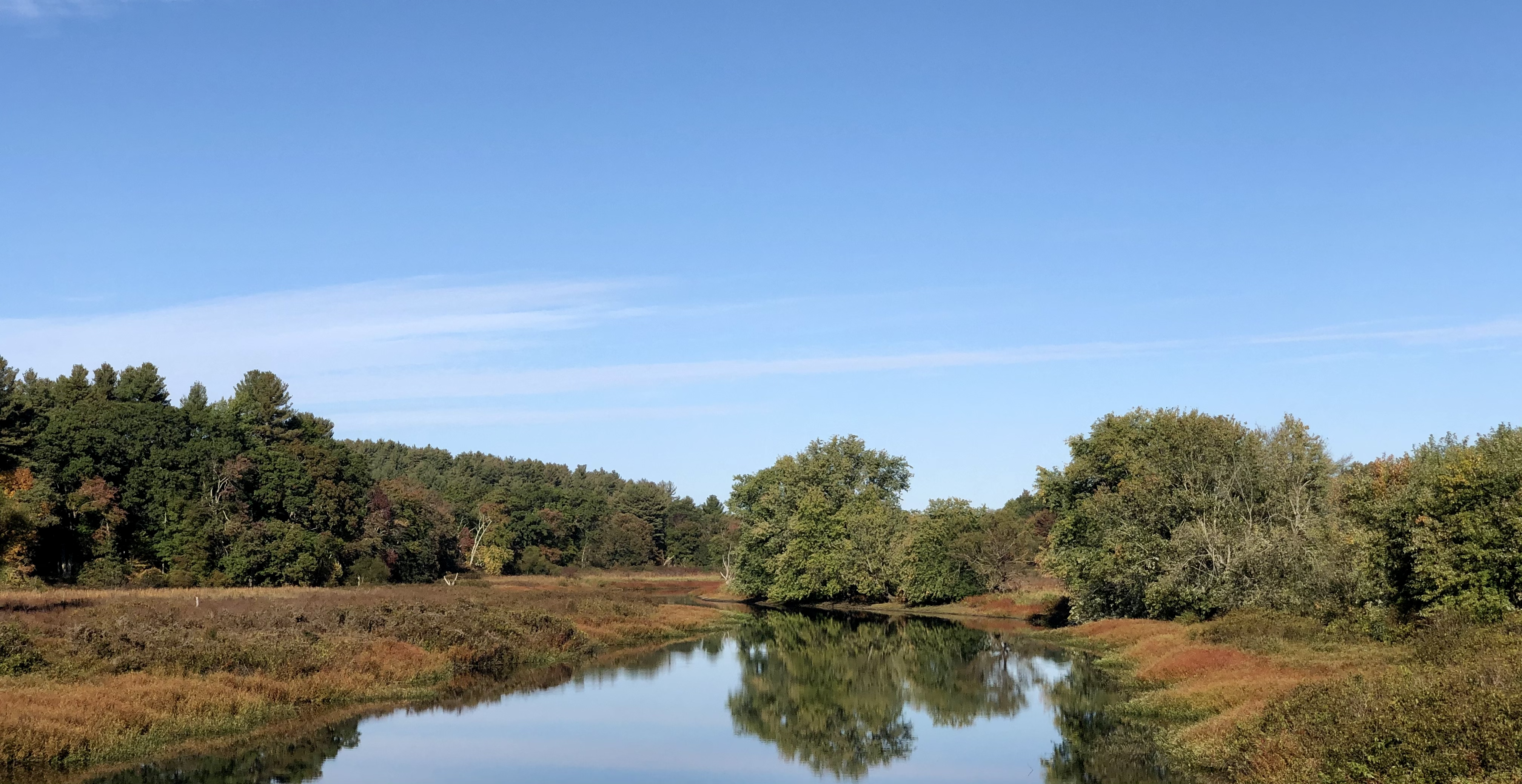A blog post about a story about a walk through a meadow
This past semester, I wrote a story about a walk through a changing world. It’s called A Walk.

The goal was to learn more about interactive narrative and narrative theory, Nick Montfort recommended I read Porter Abbot’s Cambridge Introduction to Narrative which is a primer on narrative theory. Until this point, I had never actually learned any real theory about writing. Prior to my reading, I had heard some narrative theory jargon before, but these weren’t much more than vague and lumpy estimations and uneducated guesses. The best I could muster was a sloppy synthesis of comments mentioned offhand by english teachers of the past all conglomerated and then blurred together by the fog of memory. Abbott made these things concrete. He starts by defining narrative (within his narrative theory) as “a representation of an event or series of events” and then constructs the rest of the theory around it. The key point here is that a narrative is a representation of the events and that whenever events are represented, a narrative exists.
It may seem at first that defining things about narrative by formalizing it into a theory could be bad for the creative business of writing. When I write, I want to just write, not think about theory. But I think the opposite is true. When writing a creative work about a character, I might have thought about varying the a number of things about the telling of that story. Maybe I could write in first or third person, maybe I could vary the speed of the telling to focus on key events or create tension, maybe vary the word choice to give a better sense of the character’s voice. In every instance of writing, I would think of a few knobs, things that could adjust the telling of that scene or story. Narrative theory as described in Abbott’s book exposes more knobs.
Some of the useful ways to vary the telling of a narrative that Abbott discusses are the following:
- Voice: who is telling the story, how does the narrator speak, what kind of mannerisms or unique viewpoints do they have? This can be important even if they are not explicitly involved in the events of the narrative.
- Focalization: the lens through which we see characters. Are we looking through their eyes or from far away? These could both be done while maintaining strict third person.
- Distance: the degree of the narrator’s involvement in the story.
- Reliability: can we always expect the narrator to tell the truth?
Abbott also discusses some useful methods of interpreting narratives, specifically: symptomatic and intentional readings. In an intentional reading, one tries to consider only arguments existing inside the world of the book and its pages, seeking to examine it as intended by the implied author (the idea of the author as represented by the text, but not necessarily the actual author). This kind of argument may make use of themes and motifs throughout a story to make an argument about the viewpoint of its implied author. In a symptomatic reading, the focus rests on the context surrounding the work and how it sits within that context, be it at the time of writing, or the time of reading. A symptomatic reading may make the argument that a text represents something about the author or the society in which the author lived. I found these very useful to understand the way people talk about stories. It is possible to engage with the same story in a completely different mode from someone else and this theory helps explain some of that.
I enjoy the idea of interactive narratives, the give a unique freedom to both the reader and the writer. Giving a reader (player?) choices in the way a story goes makes the story they experience unique to them. In these works, the reader is often given a small set of choices at any given time. They use these choices to explore a story that (often) takes a branching tree-like structure – although the story doesn’t have to be tree-like, it often is. With A Walk, the reader has some explicit choices within the page: they can choose where to go next with links at the bottom of the page. This forms a story in the shape of a mostly connected graph. But the reader also has a second choice: when to read the story. I wanted to include this choice because it is not “in the page”. This choice exists “outside the page” in the reader’s own life, but also inside the world of the story. In order to make the choice to experience the imagined world at a certain time of day, the reader must come visit at that same time in their own, real world. The ability to create choices like this is relatively unique to interactive narratives, especially digital interactive narratives, and my hope is that it gives the world a more rich feeling. A feeling of blurring the line between the real and imagined world by linking the two through the passage of time.
I’m excited to do some more exploration along similar lines later!
Here is where you can read A Walk.
This project was done as part of an independent study advised by Professor Nick Montfort. I was inspired by the stories Nick recommended incliding in large part by “The Continuity of Parks” by Julio Cortazar. From a technical perspective, this project was inspired by Curveship.
